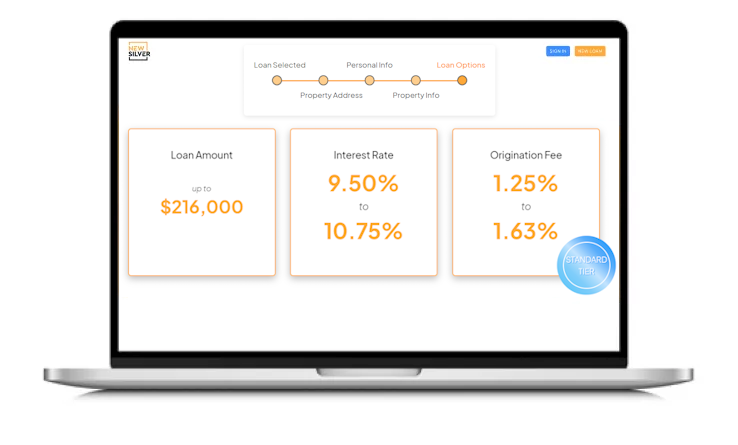What started as a lightbulb moment on a beach, quickly turned into a six-figure real estate business. With no formal background in investing, Laura took decisive action, using creative financing to fund her first deal, finding hidden opportunities through everyday conversations, and developing a fast-track flipping strategy that allowed her to complete projects in just weeks. Now, she’s not just flipping houses—she’s turning flip profits into long-term wealth with cash-flowing rentals.
So, how did she do it? Here’s a breakdown of the 5 key strategies that helped Laura go from rookie to six-figure investor in record time.
5-Step Blueprint for Fix and Flip Success
1. Start with Smart Financing: Use Home Equity to Fund Deals

Instead of waiting years to save up a down payment, Laura tapped into an underutilized resource—her home equity. By securing a $100,000 HELOC (Home Equity Line of Credit), she was able to fund her first deal without draining her savings. This approach allowed her to cover the purchase, renovation, and holding costs with minimal out-of-pocket expenses.
Many new investors overlook home equity as a launching tool, but it can be a game-changer for getting started quickly, especially in markets where speed is key. By choosing a low-cost financing method, Laura minimized risk while maximizing opportunities.
2. Find Hidden Deals Through Everyday Conversations

Laura didn’t spend thousands on marketing campaigns or spend months cold-calling sellers. Instead, her first deal came from a casual chat with a neighbor who needed to sell fast. Instead of negotiating on price alone, she offered convenience—flexible terms, a hassle-free process, and even moving assistance.
This deal taught her that many sellers prioritize simplicity over maximizing their sales price. Instead of chasing every listing, she listened for seller pain points and offered tailored solutions. Her second deal happened the same way—an unexpected conversation led to an off-market beach house at a steep discount.
By staying open to opportunities and focusing on relationships, Laura consistently found undervalued properties before they hit the market.
3. Move Fast by Pre-Planning Every Flip

One of the biggest mistakes new flippers make is wasting time after closing. Laura took the opposite approach—she planned the entire renovation before she even owned the property.
During the contract-to-close period, she:
✔ Brought in contractors for quotes
✔ Ordered materials in advance
✔ Mapped out the full renovation timeline
This meant that on closing day, work started immediately. Her team knew exactly what to do, and there were no delays waiting for materials or permits. As a result, she completed her flips in as little as three weeks, allowing her to scale quickly.
This system not only saved time but also cut carrying costs, increasing her profit margin on every deal.
4. Focus on a Niche to Minimize Surprises

Rather than tackling large-scale rehabs with unknown risks, Laura specialized in condos and townhouses built after the 1970s. These properties had predictable layouts, fewer structural issues, and mostly cosmetic renovations, making them ideal for fast flips.
By narrowing her focus, she eliminated costly surprises like foundation problems or outdated electrical systems. She also knew the exact renovation costs upfront, which allowed her to act quickly when a good deal appeared.
This niche strategy helped her streamline every flip, making each project more predictable, profitable, and repeatable.
5. Turn Flip Profits into Passive Wealth

Instead of treating her first six-figure flip as spending money, Laura reinvested it into a cash-flowing beachfront rental. This move set her up for long-term financial stability while also giving her family a vacation home they could enjoy.
The rental property now pays for itself multiple times over each year, covering all expenses while generating profit. More importantly, it protects her from the income rollercoaster of flipping. While fix-and-flip projects bring in big payouts, they’re transactional—meaning the money stops if the deals stop. By diversifying into rentals, Laura created a safety net of passive income, allowing her to flip with less pressure and more confidence.
Final Takeaway: Action Beats Perfection
Laura didn’t start with real estate experience—she started with action. She made quick, informed decisions, surrounded herself with experts, and learned on the go. Rather than over-analyzing, she took calculated risks, knowing that speed and execution would set her apart.
Her strategy is proof that you don’t need years of experience or deep pockets to succeed in real estate. You just need the right approach, a willingness to learn, and the drive to jump in.
How Laura Made $100K on Her First Flip in Just 6 Weeks
Laura’s first flip wasn’t a meticulously planned investment—it was an opportunity she seized with confidence. She bought the property from a neighbor for $300,000, using a $100,000 HELOC as the down payment and renovation budget. With a tight six-week timeline, she managed a fast and efficient rehab, keeping costs at just $35,000.
By focusing on cosmetic upgrades, streamlining contractor work, and minimizing unnecessary expenses, she transformed the home quickly and put it back on the market. The result? A sale price of $465,000—netting her close to $100,000 in profit after costs. That’s more than two and a half years of her teaching salary earned in just 6 weeks. This first big win proved that flipping was not just a side hustle—it was a scalable, profitable business.
How to Spot Fix-and-Flip Deals Others May Not

Laura doesn’t rely on expensive marketing campaigns or complex lead-generation strategies. Instead, she focuses on relationships, speed, and spotting overlooked opportunities. Here are her key tips for finding great deals:
Look for Opportunities in Everyday Conversations – Laura’s first two deals came through casual conversations, not aggressive marketing. By staying engaged with her community and listening for seller pain points, she was able to offer convenience and flexible terms, securing off-market deals before they hit the MLS.
Find Motivation Beyond Price – Many sellers aren’t just looking for the highest offer—they want an easy, hassle-free sale. By understanding what’s important to them (such as a flexible closing date, moving assistance, or avoiding home repairs), Laura made her offers more appealing without overpaying.
Act Fast on MLS Listings Others Overlook – Unlike many investors, Laura finds most of her deals on-market. She looks for:
- Listings with poor-quality photos
- Homes priced below market value
- Properties with vague descriptions
- Agents who are unresponsive or unfamiliar with investment properties
By getting in touch with the seller’s agent immediately to understand the seller’s needs, she often secures deals before others even realize their potential.
Use a Clear Buy Box to Move Quickly – Laura specializes in condos and townhouses built after the 1970s. This focus allows her to quickly assess whether a deal makes sense, without wasting time on complex properties or unexpected surprises. Knowing exactly what she’s looking for helps her act faster than other investors.
Leverage Investor-Friendly Agents – Working with agents who understand investing gives Laura an edge. Their ability to ask the right questions and communicate effectively with sellers’ agents has helped her secure multiple profitable deals.




